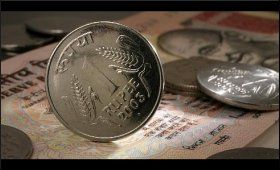|
|
|

|
Rupee trade paves the way to Russia
|
|

|
|
| Top Stories |
 |
|
|
|
IANS | 05 Oct, 2022
The efforts of the Indian central bank to promote trade in rupees are
bringing results, with state-run UCO Bank receiving necessary RBI
approvals to open a special rupee vostro account in Russia's
Gazprombank. This will help to facilitate growing trade between the two
countries and discover new industry areas of cooperation.
The
Reserve Bank of India put a mechanism in place for international trade
settlements in Indian rupees (INR) in July 2022 to meet the long-term
goal of internationalising the currency and enhance the growth of global
trade. This step allows Indian exporters and importers to use special
rupee vostro accounts to settle trade denominated in rupees.
UCO
Bank will put operational modalities in place before opening the account
with its Russian counterpart, said Soma Sankara Prasad, managing
director and chief executive officer at UCO Bank. Although there is no
clear timeline on when transactions can begin, the first step towards
the new financial order has been already made.
Bilateral trade
between India and Russia has been flourishing for several months
straight amid numerous sanctions adopted against the Russian Federation
-- Indian businesses took the opportunity to fill vacant niches without
hesitation.
The Russian government is also helping new businesses
enter the country easily to fill the economic vacuum -- extra steps are
being taken to streamline regulatory compliance and waive some fees. As
a result, several Indian businesses, including exporters and major
homegrown retail chains, have signed deals with Russian businesses to
seize the opportunity.
The disruption in relations with European
countries has led to an oversupply of commodities such as petroleum
products, ferrous and non-ferrous metals, and coal in Russia; it has
also become the reason for a systematic decline in the prices of these
export commodities. This creates additional benefits for Indian
importers. Major gains have been made in petroleum, gas, diamonds,
fertilisers, iron, steel, and paper. As of May, Russia was already
India's second-largest oil supplier.
Despite these impressive
figures, there is still room for further growth. Various experts
estimate the bilateral trade potential at $25-30 billion, assuming the
removal of trade duties and the development of new trade routes. Russian
aluminium tycoon and founder of En+ Group Oleg Deripaska recently
stated that Moscow desires to build connectivity, capital markets and
financial infrastructure with India -- similar to the model built over
decades with Europe -- to push bilateral trade to $120-150 billion over
the next decade.
With the development of the North-South
Multimodal Transport Corridor, the countries will have the shortest
trade route through Iran and can expand the list of industries for
mutually beneficial cooperation.
India and Russia can
significantly diversify their trade basket and economic exchanges by
going beyond the traditional sectors and cooperating in new areas such
as railways, transport, logistics, pharmaceuticals, minerals, and
metallurgy, which would give further impetus to bilateral ties.
The
cooperation in aluminium industry is likely to evolve, largely due to
the development of the power grid. According to current estimates, more
than 1/3 of all additional aluminium demand in India in the coming years
will come from the cable industry due to the high rate of
electrification. Other promising cooperation areas include automotive
industry, and supply of primary aluminium and semi-finished products.
Clearly, developing bilateral trade is a win-win scenario for both countries.
Moreover,
once Indian goods enter Russia, they will have unhindered access to
markets in other CIS countries, so the continued efforts of both
governments to facilitate bilateral trade are key to the overall
well-being of their economies. And the development of trade in national
currencies is one of the most important steps on this path.
|
|
|
| |
|
|
|
|
|
|
|
|
|
|
|
|
|
|
| |
| Customs Exchange Rates |
| Currency |
Import |
Export |
US Dollar
|
₹84.00
|
₹82.25 |
UK Pound
|
₹104.65
|
₹108.10 |
Euro
|
₹92.50
|
₹89.35 |
| Japanese
Yen |
₹56.10 |
₹54.40 |
| As on 25 Jul, 2025 |
|
|
| Daily Poll |
 |
 |
| Who do you think will benefit more from the India - UK FTA in the long run?
|
|
|
|
|
|
| Commented Stories |
 |
|
|
|
|
|
| |
|